Month: November 2017
agusman-FinalProjectProposal
In my artistic practice, I’m excited by the the concept of discovery through the visualization of the self, through both visual and sonic means. I was very inspired by Golan Levin’s, “Messa di Voce” part 4, where moving bodies detected by computer vision leave dynamic computational “auras” that disperse across the screen.
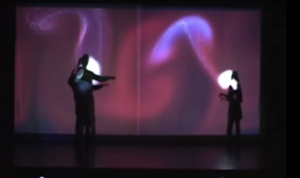
“Messa Di Voce” by Golan Levin
For my final project, I propose a program that manipulates a particle system with features of the voice. I am thinking about creating a landscape of trees, flowers and animals based generated by a singing to it. Trees and flowers could be generated using an l-system growth pattern that responds to the volume or frequency of input sound.
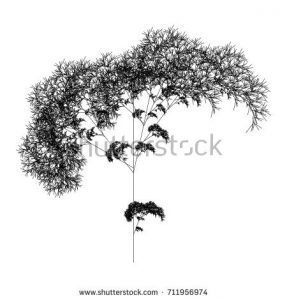
Or, it could be a bit more abstract and simply contain particles that are displaced and moved based on frequency and volume of the voice. That system could act more like a flock of birds, using encoded Boid behaviors.
mstropka-Project Proposal
For my project I would like to create a music visualizer that takes the lyrics from a song and changes the location and form of the letters based on the audio data from a file. I also think it would be interesting to add interaction between the letters and the mouse to make the program more interactive and interesting for the user. The best format for this, I think, would be a long scrolling line of text that is the lyrics of the song that get altered as the music goes on. 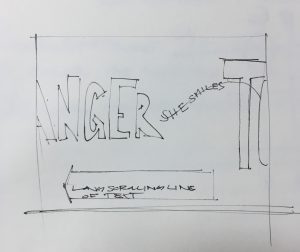
katieche- project 12 proposal
For my project, I wanted to create an interactive game that is minimalistic but fun and somewhat challenging. The user represents an organic shape that follows the mouse and is going to be animated using photos preloaded. It will have a constant waving fluid like motion to look more interesting. There will be geometric shapes falling from the top of the canvas that interact with the user. The two shapes that can win the user points are the circles and squares. To get points from the circles, you (the organic shape) must touch the circle, which causes it to burst. To get points from the squares, the user must press one of four keys which will coordinate with the blob’s color, to allow the blob to eat the square of the same color (i.e. if the user presses “Q” the blob will change to pink, letting it eat the pink squares, but if the blob is pink and it touches a yellow square, the yellow square will just pass through it). Beware of the triangles! Touching the triangle will cause the user to lose a life. There is also a score counter at the bottom right. The higher the user’s score, the faster the shapes will fall from the top of the screen. If the user doesn’t hit a square or a circle, the user does not die, they just lost the opportunity to gain that point.
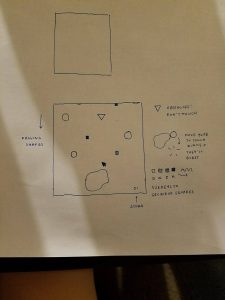
draft made in illustrator of what the game might potentially look like. The blob starts off white until the user changes its color by hitting a key.
Jdbrown – Final Project Proposal
I’m working on a sound installation for next semester, and I’d like to use this project to create an interactive draft of the installation. The basic concept is a bunch of phones hanging from the ceiling, playing back snippets of “final conversations” that I’ve amassed from a Google Survey through social media. The overall project will be a small animated scene which plays sound when clicked, etc. Part of what I love about P5 is the drawing aspect, so I’m going back to the start and drawing the scene, using the computational elements I’ve learned along the way to make it stylish.

rgroves – Looking Outwards – 12
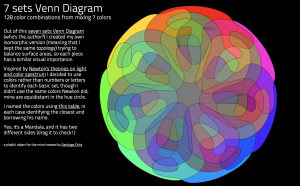
Seven Sets by Santiago Ortiz is related to my projects because it is a visualization of a mathematical concept using color. It is basically the answer to the question “how many subsets are there of a set of size 7” (the answer is 2^7) but instead it’s a set of colors and he visualizes a subset as a combination of those colors. The way the information is displayed is very simple, beautiful, and easy to understand.
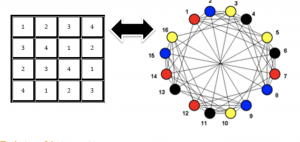
While this isn’t exactly an art project, sodoku puzzles can be directly analyzed as graph coloring problems as shown here. They are an example of many simple games that can be analyzed as mathematical concepts, which also include the Japanese game Hashiwokakero and even tic-tac-toe.
thlai-Project12-Proposal
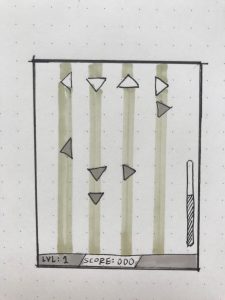
keuchuka – project 12 – proposal
For the final project, I want to create something that involves both generative and interactive components. I’m interested in creating generative motion graphics that involve typography, fill, and some 3D component. It will be generative either based on a set of data consisting of words (like a wikipedia page). It will also be dependent on also the mouse activity laid on the canvas. The shapes and lines will change according to interactivity, but type depends on the data fed in. The text interacts with the 3D shape by going around and behind it as well. I will be reading up on 3D super shapes and Dan Shiffman’s tutorials on them. Hopefully the type and the the shapes create a sense of aesthetically pleasant landscape that represents a set of data. I’m trying to create a piece of generative art that is not obviously showing a set of data, but looks like compositional, time based, motion graphics.
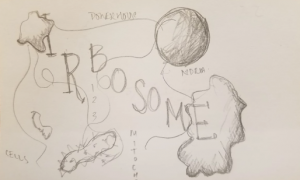
above is an image of a potential landscape composition
yunzhous-LookingOutward-12
I will start with Deemo, a game where I got inspiration for the final project from. This game is done by Rayark. This music game allows user to play the correct nodes that correspond with the background music. What I really admire about the project is that it creates a background story for players. The player play the game to help a tree grow, and the growth of the tree helps a little girl in the game. The visual effect and music choice are all great. I attached an video below demonstrating this game. However, I think the game has one weakness. It might be better if the player were able to do more actions rather than simply pressing the screen at the correct time.
To explore more possible interaction with simple geometries, I looked at project Three Drops by Scott Snibbe. This interactive exhibition allows people to interactive with virtual water in three different ways: showering, stopping water drops from reaching the ground, and attracting water molecules. Even a simple element, water, can exist in many phases. In my project, I will try to incorporate more ways to interactive with the computer program.
Deemo by Rayark
Three Drops by Scott Snibbe. Read more here.
elizabew – Looking Outwards – 12 – sectionE
For my final project, I want to create a choose your own adventure game. The idea first came when I was stuck in a rut and could not decide on what to do, so a friend of mine told me that a “choose your own adventure game” would have an interesting ending and would be doable with what I’ve learned from in this class.
Some of the games that immediately came to mind for me are: Undertale, The Stanley Parable, and MUD—but i will just be discussing The Stanley Parable and MUD in this post.
The Stanley Parable is an interactive, fictional PC game designed by Davey Wreden initially, and then designed by both him and Davey Wreden in the official remake. I’ve played choose your own adventure games before, but this was the game that really got me into the genre. I admire not only the interesting and unique story, but its immersing effect on the player that pulls them into a world without using action-packed gameplay; while only being guided by only a narrator, visual elements, and sound. There are numerous endings that creates a replay value since every new decision that is made creates a whole new story. I may be biased since this game bring up a feeling of nostalgia, but I still find it to be one of the best in its genre.
MUD is an online, text-based role-playing game where users interact with the world based on only keywords—no visuals or sound. It is considered to be one of the roots of rpg games and an inspiration for other games in the late 1970s and early 1980s. The game had a preprogrammed game, but it allowed multiple players to interact using online chat, player vs player, and interactive fiction. Players would only be able to interact with one another and with the world by typing in commands and reading/viewing descriptions of the environment around them, objects near them, and the other players in the world. This game was incredibly popular, and goes to show that visuals are not always needed to play an interesting and immersive game.

![[OLD FALL 2017] 15-104 • Introduction to Computing for Creative Practice](../../../../wp-content/uploads/2020/08/stop-banner.png)